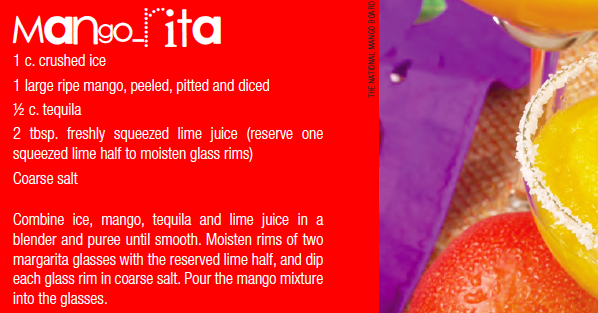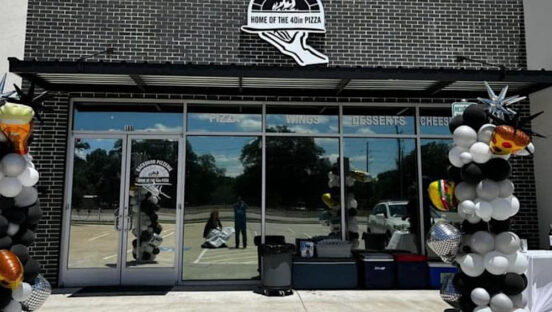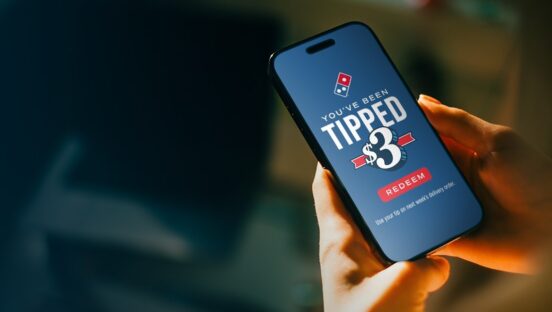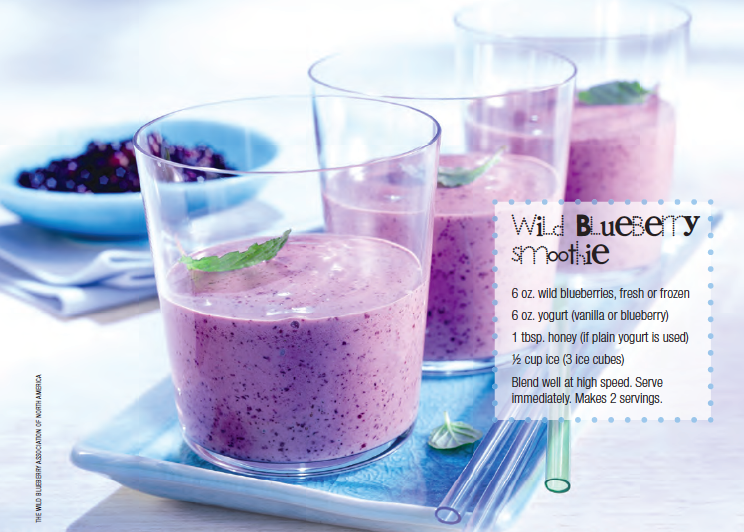
Last year, Nation’s Restaurant News ordered a survey to gauge the opinions of customers about nonalcoholic beverage programs; findings related that out of the 2,700 respondents, the words most commonly used to describe quick-service drink programs were “old,” “boring” and “tired.” Are your customers thinking the same about your pizzeria’s beverage choices? If so, ice-blended drinks may be a welcome addition to your menu.
“Unless you’ve been living in a cave for the past decade, you’re aware that ice-blended drinks are one of the hottest menu items going,” says Robb Anderson, beverage specialist for Kerry Food & Beverage, Waukesha, Wisconsin. Indeed, a Mintel study found that Americans buy about $2 billion worth of pureed fruit drinks per year—a number that is expected to grow by 10% for 2008. With summer fast approaching, now is a great time to see if you can profi t from this nationwide trend.
Making the Leap
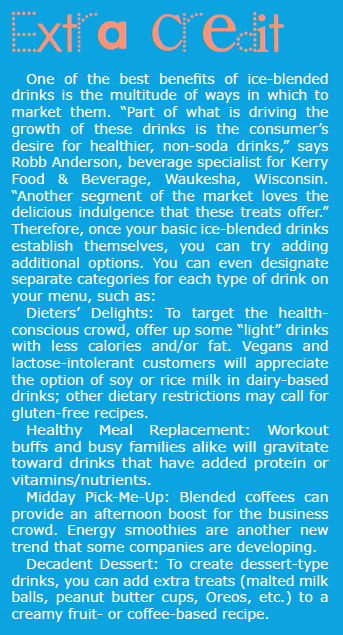 Before you hop on the ice-blended drinks bandwagon, do some research. Various manufacturers can help you set up a frozen drinks operation within your pizzeria, but you’ll have to find out which products are best for your business. “When starting a blended program, ask your product supplier to give you sample products to test with your staff,” says Peter Reynolds, sales manager for Las Vegas-based Shaver Blender Inc. “Do your homework. Taste different products to see if you like them.”
Before you hop on the ice-blended drinks bandwagon, do some research. Various manufacturers can help you set up a frozen drinks operation within your pizzeria, but you’ll have to find out which products are best for your business. “When starting a blended program, ask your product supplier to give you sample products to test with your staff,” says Peter Reynolds, sales manager for Las Vegas-based Shaver Blender Inc. “Do your homework. Taste different products to see if you like them.”
You can also gain invaluable knowledge by learning how others in your area handle the sales of ice-blended drinks. “My suggestion to any operator who is contemplating serving these beverages is to thoroughly research it,” suggests Gary McArthur, owner and president of Bagel Me Corporation/First Class Pizza in Orange, California. “Go to every business in your area and observe how they operate, how they lay out the system, the equipment they have and who their customers are. Contact vendors; they have a wealth of experience and suggestions.”
Once you’ve decided on a supplier, start slow by offering a few flavors that you’re confident your customers will like. Don’t add too many options at once, cautions Anderson: “Stick to the basics when you begin. If I had to choose only three flavors, I’d go with two fruit and one dairy: strawberry (or strawberry-banana), peach or mango (pick your favorite) and mocha (basically, dairy, coffee and chocolate).” “Keep your flavors limited to five to keep it as simple as possible,” agrees Reynolds. “When your program is proving successful, you can then bring in additional flavors to run as a special, and then add any good movers to the list.”
Keep in mind that you can easily provide a twist on basics with the addition of sauces, syrups and concentrates. While waiting for your basic flavors to take off, experiment with how you can tweak them using these types of additives.
Marketing Matters
Menus. The first step in marketing your frozen drinks: Create a drink menu that lets customers know about the option, and add the drink list to your regular menus as well. “Your menu board is a selling point,” says Karl Lovus, customer consultant for Dr. Smoothie, Fullerton, California. “Show the names of drinks, and make them come alive with adjectives—‘Luscious Strawberry,’ for example.”
Menu presence has been a major factor in one established chain’s marketing of frozen beverages: “A list of drinks is on the first page of our food menu, clearly marked as nonalcoholic next to a list of classic cocktails,” says Marc Sachs, corporate beverage manager for Boston-based Uno Chicago Grill. “We also feature these drinks on limited-time-only and special event menus, as well as our children’s menu.”
Advertising and promotions. “To have a successful frozen beverage program, you will need to promote your specialty drinks,” says Reynolds. “Drink menus, table tents, placement on your food menus (insert cards/daily specials) and posters will all help.”
“Try ‘Get one free smoothie with every 10 smoothies purchased,’” suggests Lovus. “A key ad in the most-read newspaper in the area works. Try special promotions for special days.” And, besides traditional advertising, you can find other ways to get your drinks on the local map. “The pizzeria is a neighborhood store,” says Lovas. “Align yourself with sports teams and schools; reach out to the community. Give a percentage of the sale of every smoothie to a local team, or simply sponsor a local team.” You’ll get the teams—and all of their friends—in the store while helping out with local youth activities.
Timing. “These beverages often sell best during the a.m. and afternoon day periods,” says McArthur. “We have found that many customers will drink a smoothie as a breakfast substitute. Think about what kind of traffic you have at your location: business, lunch, dinner, etc.”
Seasons will also affect the sale of icy drinks. Of course, they’re a no-brainer in warm weather, and Reynolds suggests selling frozen lemonade (or strawberry lemonade) for summertime. Some pizzerias use these sales to help business when demand for pizza wanes: Gary Scobey, owner of Joe Chicago’s, Grandville, Michigan, says, “We needed to find a way to draw in customers during the summer months. We’re known for deep-dish pizza, so this helps us when hot pizza is not what the customer wants.”
Wintertime sales may be more difficult to secure in certain parts of the country, but you can still beef up sales during the colder months. “Studies show that people crave butterfat when it’s cold outside; they avoid it when it’s hot,” says Anderson. “Promote your heavy, creamy frappes in the winter, and offer fruit-and-cream drinks (peaches and cream, for example) during the spring and fall.” You can also use colder weather to promote new recipes, Anderson continues: “Add seasonal flavors to keep things exciting—Pumpkin Pie or Caramel Apple in the fall, Peppermint Mocha in the winter.”
Finishing touches. Don’t forget the presentation of your ice-blended drinks; making them look appealing is almost as important as making them taste great! Use fun glasses and add appropriate garnishes, if possible. “Garnishing drinks with fresh fruit is always a plus, and your customers will associate this with using all-natural products,” says Reynolds. “And, with the proper glassware, these make a great presentation to your customers.”
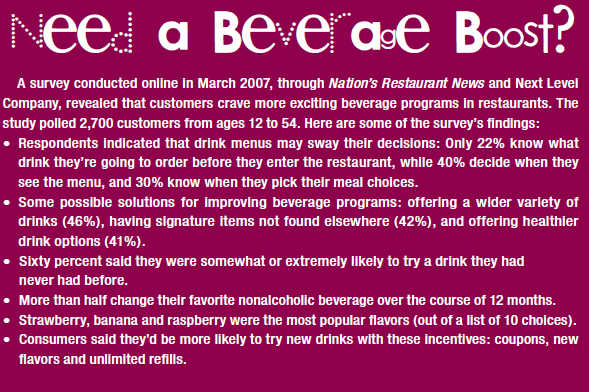
Supplies and Setup
Ice-blended drinks can be one of the easiest items to add to your menu. “Simply enough, all you need is a blender, ice and any ingredients or juices you prefer,” says Scobey, whose pizzeria offers 21 flavors of fruit smoothies, as well as blended coffee drinks.
But, though the ice-blended business can be very straightforward, you’ll need to determine if you have the space. “Look at the equipment issues, like a freezer to hold bulk product, a dipping freezer, blender area, ice machines, a wash sink close by, etc.,” says McArthur. “Trying to cram ice-blended drinks into an already tight facility creates a high probability for inconsistency.”
You'll also need to find drink mixes: some prefer powder mixes, while others use liquid types. “Different products have different consistencies,” says Reynolds. “Powder drinks sometimes taste chalky if not blended long enough; some liquid mixes have an aftertaste. Remember, you get what you pay for, and higher-priced products usually taste better and are made with better-quality ingredients; they cost more, but you can sell them for a higher price.”
Brian DeLoia, owner of Johnny’s Pizza in Ellwood City, Pennsylvania, offers fruit slushes, granitas and frozen cappuccino at his pizzeria. He uses liquid mix for all of his drinks, plus a powdered dairy mix for the granitas and cappuccino. “A benefit of using liquid mix is that it can stay in the machine for up to 30 days before sterilizing,” he says. “Containers with powdered dairy must be sterilized every 15 days.” No matter if you choose one or both forms, testing the finished product will help you get the highest quality at the best price.
Most experts agree that ice-blended drinks can provide great profits if they’re made and marketed correctly. “Both frozen fruit smoothies and frozen coffee drinks would be a great addition to any pizzeria’s menu,” says Barry Boehme, vice president of marketing for Island Oasis, Walpole, Massachusetts. “Both are extremely popular with consumers, and frozen smoothies have very strong margins—greater than most beverages.”
“Smoothies, shakes and coffee drinks are something that every pizzeria should offer to their customers,” agrees Reynolds. “Frozen beverages are moneymakers, plain and simple.”
